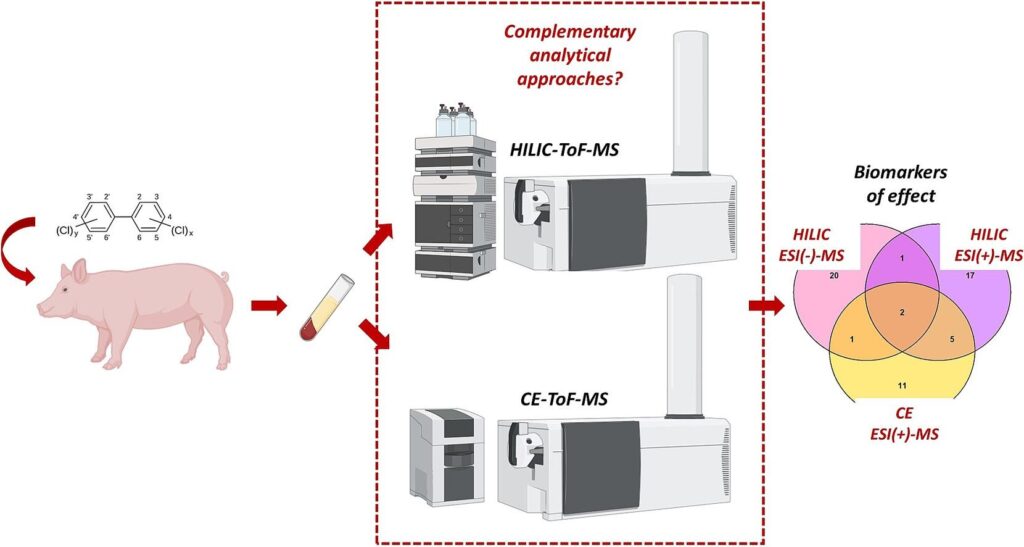- Acknowledgements: Project PID2020-120020RA-I00 funded by MCIN/AEI/ 10.13039/501100011033 and Project PROYEXCEL_00195 (Andalusia Government, Spain). LN thanks the Grants for the requalification of the Spanish University System for 2021-2023 (Maria Zambrano). MMDP gratefully acknowledges the European Social Fund and the Junta de Andalucía for financing her postdoctoral contract (DOC_00230). MHM gratefully acknowledges the grant IJC2019-040989-I funded by MCIN/AEI/ 10.13039/501100011033. Authors would like to thank Francisco J. Lara for its technical help during the performance of the experiments.
- Authors: L. Narduzzi, M.M. Delgado-Povedano, B. Le Bizec, A.M. García-Campaña, M. Hernández-Mesa, G. Dervilly.
- Reference: Microchemical Journal 207 (2024) 111839.
Hydrophilic interaction liquid chromatography (HILIC) and capillary electrophoresis (CE) coupled to mass spectrometry (MS) are two of the most widely used techniques to explore and characterize the polar metabolome. Both platforms have some peculiar characteristics that make them more suitable for studying different kind of metabolites and different parts of the metabolome. Consequently, their combined use is recommended to extend the coverage of the polar metabolome, particularly when multiple metabolic pathways are expected to be perturbed, as in toxicological studies related to exposure to environmental pollutants such as polychlorinated biphenyls (PCBs). It is unclear whether chronic exposure to low doses leads to effects on the most polar metabolites.
In this work, both HILIC-MS and CE-MS platforms have been used to characterize the polar metabolome of blood serum from pigs exposed to low-doses (20 ng/kg body weight (b.w.)/day) of Aroclor 1260 (a technical mixture of PCBs). The use of both platforms aims to cover large parts of the polar metabolome to better characterize the effects of PCB exposure. The results showed that the combined use of HILIC-MS and CE-MS effectively extended the coverage of the metabolome and the interpretability of the data, highlighting their complementarity in metabolic pathways analysis. The analysis of the polar metabolome evidenced a strong effect of exposure on amino acid metabolism, affecting 10 of the 20 proteic amino acids, and a consistent overflow in the urea cycle.
This work highlights the need to implement analytical multi-platforms to better address metabolomics studies, showing the complementarity of two widely used analytical techniques (i.e. HILIC-MS and CE-MS) to study the polar metabolome in a risk assessment framework.




